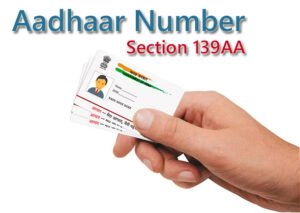When dealing with income tax provisions, the term “child” carries significant implications, particularly in areas such as income clubbing, exemptions, and deductions. Introduced by the Taxation Laws (Amendment) Act, 1975, and later renumbered by the Direct Tax Laws (Amendment) Act, 1987, the definition under Section 2(15B) offers a comprehensive and inclusive understanding of “child” in relation to an individual. This blog delves into the historical context, legislative amendments, and practical applications of this term under the Income Tax Act.
Introduction to “Child” [Section 2(15B)]
The term “child” was first introduced under Section 2(15A) through the Taxation Laws (Amendment) Act, 1975, effective from April 1, 1976, and later renumbered as Section 2(15B) by the Direct Tax Laws (Amendment) Act, 1987, effective April 1, 1988. The definition applies to Assessment Year 1976-77 and onwards, ensuring clarity and inclusivity in tax provisions involving children.

Definition of “Child”
Under Section 2(15B), the term “child,” in relation to an individual, includes:
- A step-child of the individual.
- An adopted child of the individual.
This inclusive definition ensures the consistent application of tax laws, irrespective of familial dynamics, unless the context otherwise specifies.
Key Provisions Related to “Child”
The definition of “child” influences several sections of the Income Tax Act. Below are the key provisions:
1. Exempted Incomes (Section 10)
- Section 10(5): Exemption for leave travel concession expenses involving children.
- Section 10(10)(ii): Gratuity payments benefiting dependent children.
- Section 10(19): Specific exemptions for the income of minor children.
- Section 10(26BBB): Exemptions for income earned by tribal children.
- Section 10(32): Relief from clubbing minor children’s income.
2. Trusts and Institutions
- Section 13(1)(b): Trusts created for the benefit of women and children, ensuring tax benefits.
3. Deemed Ownership of Property
- Section 27(f): If an individual transfers house property to a minor child (not being a married daughter) without adequate consideration, the property is considered the individual’s for tax purposes.
4. Income Clubbing (Section 64)
- Section 64(1A): Income of a minor child (excluding a child with disabilities as per Section 80U) is clubbed with the income of the parent.
5. Deductions Under Chapter VI-A
- Section 80C: Tuition fees, life insurance premiums, and other specified expenses for children qualify for deductions.
- Section 80D: Medical insurance premiums for children are deductible.
- Sections 80DD & 80DDB: Expenses for dependent children with disabilities or medical treatment qualify for deductions.
- Section 80E: Interest on education loans for children is deductible.
- Section 80G: Donations benefiting children attract deductions.
- Section 80GG: Rental housing benefits consider children’s dependencies.
- Section 80IBA: Housing projects deductions involve child-related considerations.
6. Other Provisions
- Section 222(1): Certificates issued to Tax Recovery Officers must reference children where applicable.
- Fourth Schedule: Superannuation and gratuity funds include children under their scope.
Practical Implications of Section 2(15B)
The inclusive definition of “child” under Section 2(15B) serves several practical purposes in the context of tax planning:
- Income Clubbing: Minor children’s income is often clubbed with a parent’s income, except in specified cases such as disabilities (Section 80U).
- Deductions: Parents benefit from various deductions under Sections 80C, 80D, 80E, and others for child-related expenses.
- Exemptions: Income accruing to children may qualify for exemptions under Section 10 provisions.
- Property Transfers: Transfers of property to minor children must comply with tax laws to avoid unintended tax consequences.
Legislative Timeline
- 1975: The term “child” was first introduced under Section 2(15A) through the Taxation Laws (Amendment) Act.
- 1987: Renumbered as Section 2(15B) through the Direct Tax Laws (Amendment) Act.
These amendments reflect the need to align tax laws with evolving societal structures, such as stepchildren and adopted children.
FAQs
1. What is the importance of Section 2(15B) in the Income Tax Act?
Section 2(15B) defines “child” comprehensively, influencing provisions related to income clubbing, exemptions, and deductions, ensuring clarity and inclusivity.
2. Does the term “child” include stepchildren?
Yes, the term explicitly includes stepchildren and adopted children under Section 2(15B).
3. How does this definition affect income clubbing under Section 64?
Income accruing to a minor child (not disabled) is clubbed with the income of the parent, ensuring proper tax accountability.
4. Are there specific deductions for expenses incurred for children?
Yes, deductions under Sections 80C, 80D, 80E, and others cater to education, medical expenses, and insurance for children.
Conclusion
The definition of “child” under Section 2(15B) of the Income Tax Act is a cornerstone for several tax provisions. Its inclusive nature ensures equal treatment of stepchildren and adopted children, aligning the Act with modern family structures. Taxpayers should leverage this definition to maximize benefits from exemptions, deductions, and income clubbing rules. Understanding these provisions can lead to better tax planning and compliance.
For more insights into tax laws, exemptions, and deductions, visit SmartTaxSaver.com.



